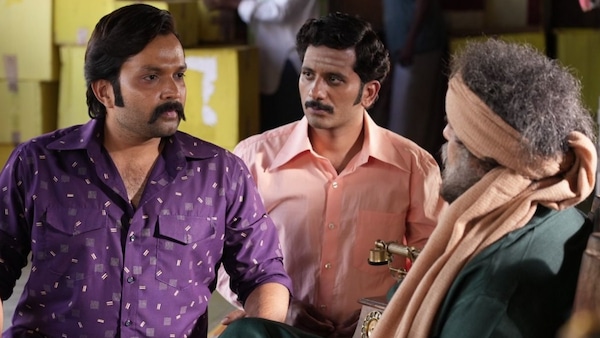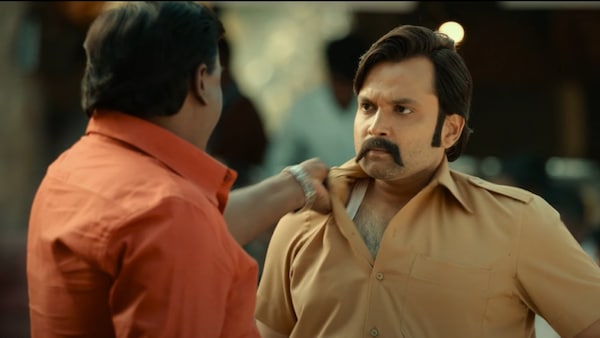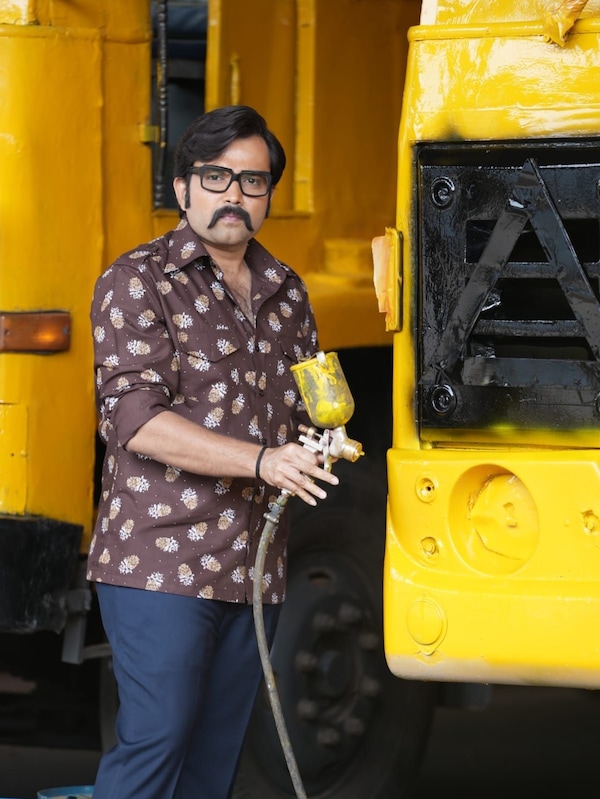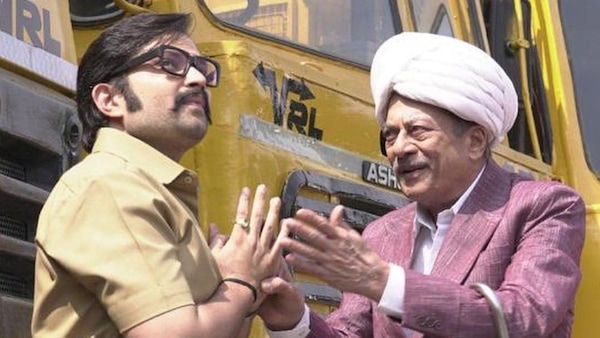Vijayanand review: Vijay and Anand Sankeshwar take out an expensive but unappealing personal advertisement
The film is the biopic of VRL Logistics founder, Vijay Sankeshwar.

Last Updated: 09.24 AM, Dec 09, 2022
Story: Vijay Sankeshwar, the son of a Gadag-based small time publisher, has bigger aspirations, beyond running the business with a second-hand semi-automatic Victoria 800 printing machine. Venturing into a different business without the capital for it, is easier said than done. But he perseveres and goes from owning one single truck to a fleet of thousands in the span of a few decades – a journey that was fraught with impediments.
Review: In Karnataka, VRL is a household name – not everyone may know the founder, Vijay Sankeshwar, but the logistics and transport group, which is one of the largest privately-owned ones in the country, is quite popular. Although transport has been Sankeshwar’s mainstay, he has also ventured into media publishing, launching two newspapers in quick succession – first the Kannada daily Vijaya Karnataka and then, the English one, Vijay Times.
Two decades ago, I began my journalism career at the Vijay Times office in Chamarajpet – a stint that well and truly helped mould me into the professional I am. More than half of the editorial staff had been poached from the Indian Express, while the rest comprised newbies like me. The learning, of course, came from the senior editors on the team, whether it was resident editor and popular sports writer Suresh Menon, Associate Editor and fellow sports writer Vedam Jaishankar, among many others. Sankeshwar’s role was about running his media empire with an iron-hand and stemming any voice of dissent. As a first, he put CCTV cameras in several corners of the newsroom, which supposedly captured audio too. The feed was to be monitored by the resident editor, who soon enough packed his bag, along with some other senior staff. (I was way too junior to know if there were other reasons, but this was what was discussed in the office) Those who didn’t leave but weren’t pleased about the cameras got transfer letters to Gulbarga and other remote areas of the state. Those who stayed put were then under the management of a former VRL engineer, as executive editor. But that was not the worst of it all. That came when Sankeshwar quit the BJP and launched his own party – the Kannada Nadu party, which was headquartered out of the media office in Chamarajpet. Imagine a newsroom that was also teeming with grassroot party workers walking in and out and all the ensuing commotion. It was like a fish market every time the party head was in town. I left Vijay Times after about a year and a half, and soon after, Sankeshwar sold all his media businesses to the Times Group, which, as it turns out, was also a place of employment for well over a decade.

Obviously, when a biopic on Sankeshwar was announced, it piqued my interest. The personal experiences apart, there were tonnes of rumours one had heard about his cut-throat measures in running his transport business, which was more or less the modus operandi with the media house too. But then, the biopic was being produced by the Sankeshwars – Vijay and his son Anand – so any hope of an objective look at his journey was thrown out of the window then and there. The first impression one got after hearing the team behind the film speak, whether it was director Rishika Sharma, who also wrote the film, or lead actor Nihal Rajput, or after seeing the trailer of the film, was that it was about glorifying a ‘legend’. Building an empire of the scale of VRL Ltd is no mean feat, but willing people to believe that it is set on a foundation of only honest measures is a bit of a stretch.
That, though, is not the only problem with Vijayanand. It’s a very superfluous attempt at story-telling, with random, disjointed pieces stitched together. Perhaps, focusing only on his transport business and adding more details would have been better than the hotch-potch that we have now. The way it is now, Vijayanand is Rishika’s big platform for Nihal. As Vijay Sankeshwar, he, obviously, gets the lion’s share of the screen time. On paper, the ensemble cast of the film looks mighty impressive, right from Anant Nag to V Ravichandran, Prakash Belawadi, Shine Shetty, Bharath Bopanna, Siri Prahlad, Vinaya Prasad, Archana Kottige, among others. Most of them, though, do not get more than 2-3 scenes. Hell, Ravichandran did not even get a second costume.

Vijayanand, according to the team, is a tale meant to inspire, but that is the tone that the film is lacking. Take, for instance, the bit about Vijay Sankeshwar suffering from debilitating spondylitis and telling his then teenaged son Anand that it was now up to the little boy to see the company through from debt to profit, which then cuts to a few years later, with the senior man in better physical health and having revived the business, with no explanation for the latter.
For a film that was meant to be the truth and only the truth, one cannot help but wonder why the TOI takeover of Vijaya Karnataka and Vijay Times was not discussed better. TOI, called here as News of India, was apparently threatened by the growth of Sankeshwar’s publications, so they tabled an offer and he took it up. Why, though? It’s been 15-16 years since this development, but there’s still no satisfactory answer and only the hush-hush whispers from former editorial colleagues about the massive losses (to the tune of a crore every month) Sankeshwar incurred with the English daily.

Verdict: Vijayanand is a feel-good film for the Sankeshwar family. Whether or not audiences buy into the positive spin on the man is a different matter, but will anyone feel inspired by this film? Highly unlikely. VRL Film Production has spent a helluva lot of money on the promotions of the film – flying the team across the country on private chartered flights, buying prime time news slots and even getting twitter emojis for the movie and the lead star too. This is unlikely to be a good investment.

 Premium
Premium